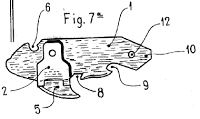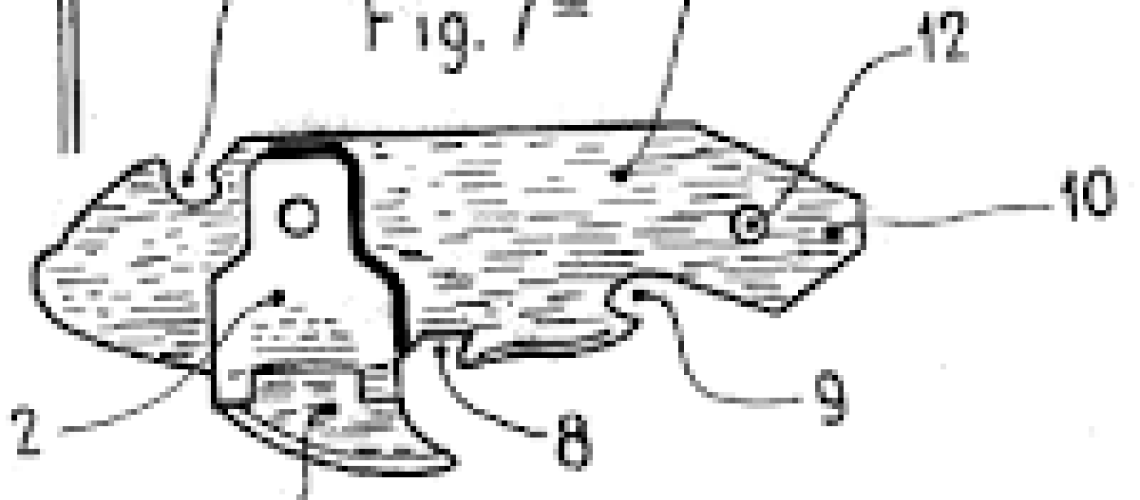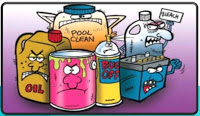 One of the most striking novelties of the new Patent Law is the expansion of the scope of the matter that may be protected as
One of the most striking novelties of the new Patent Law is the expansion of the scope of the matter that may be protected as
utility model. In fact, the new definition of “utility models”
includes the term “composition”, which implies its extension to any
product or composition, including chemicals, substances or
compositions, but excluding inventions that involve biological matter
and pharmaceutical substances and compositions, as clarified by the Law itself.
This new aspect of utility models promises to give
enough game in the future, since, on the one hand, the borders between
products included and excluded are, in some cases, diffuse, and, on the other
On the other hand, the maintenance of the lowest requirement of inventive activity for the
utility models can be problematic when applied to products
chemicals (in fact, it is already controversial when applied to inventions of
mechanic).
enough game in the future, since, on the one hand, the borders between
products included and excluded are, in some cases, diffuse, and, on the other
On the other hand, the maintenance of the lowest requirement of inventive activity for the
utility models can be problematic when applied to products
chemicals (in fact, it is already controversial when applied to inventions of
mechanic).
Therefore, we will have to get used to seeing that in the BOPI
the small mechanical inventions that have traditionally been the object of
This type of industrial property (such as, for example, a can opener) is
will alternate with chemical products, whose applicants decide to protect them by
this way.
the small mechanical inventions that have traditionally been the object of
This type of industrial property (such as, for example, a can opener) is
will alternate with chemical products, whose applicants decide to protect them by
this way.
But not all the news that will affect the models of
usefulness are so controversial. For example, it ends the requirement of
relative novelty in Spain by equating the state of the art with the
required for patents, which will allow clearly delimiting the
documents that are prior art for a utility model for the purposes of
determine its novelty and inventive step, and end the situation of
uncertainty created by the previous Patent Law.
usefulness are so controversial. For example, it ends the requirement of
relative novelty in Spain by equating the state of the art with the
required for patents, which will allow clearly delimiting the
documents that are prior art for a utility model for the purposes of
determine its novelty and inventive step, and end the situation of
uncertainty created by the previous Patent Law.
Another significant novelty is the possibility of requesting Reports on the State of the Technique (IETs) for models of
usefulness, including the corresponding Written Opinion. These IETs in models
useful will be necessary to give effect to the exclusive rights
obtained with your registration (for example, within a lawsuit process for
infringement against a third party).
usefulness, including the corresponding Written Opinion. These IETs in models
useful will be necessary to give effect to the exclusive rights
obtained with your registration (for example, within a lawsuit process for
infringement against a third party).
Regarding the granting procedure, this one has not had
significant changes, although it is worth noting that with the new Law there will,
within the opposition procedure, the possibility of requesting an extension
2 months to complete the opposition, providing evidence or completing the
initial allegations. Likewise, a new (and positive!) aspect is that the
Examination of the oppositions will be carried out by a Commission made up of three experts
of the OEPM technically qualified, which could be complemented by a jurist.
significant changes, although it is worth noting that with the new Law there will,
within the opposition procedure, the possibility of requesting an extension
2 months to complete the opposition, providing evidence or completing the
initial allegations. Likewise, a new (and positive!) aspect is that the
Examination of the oppositions will be carried out by a Commission made up of three experts
of the OEPM technically qualified, which could be complemented by a jurist.
And with all these new developments, what will be the future of the
utility models in Spain? In principle, the extension to chemical products,
the possibility of claiming an internal priority and the substantive examination
mandatory for patents, which may cause some applicants to opt
for a utility model for your invention, It seems that they will reverse the trend
decreasing in recent years.
utility models in Spain? In principle, the extension to chemical products,
the possibility of claiming an internal priority and the substantive examination
mandatory for patents, which may cause some applicants to opt
for a utility model for your invention, It seems that they will reverse the trend
decreasing in recent years.
What does seem clear is that, once again, the models of
utility promise not to disappoint and leave a door open to possible
interpretations in some aspects by applicants, agents,
examiners and judges, which will have to be seen how they are resolved in the future.
utility promise not to disappoint and leave a door open to possible
interpretations in some aspects by applicants, agents,
examiners and judges, which will have to be seen how they are resolved in the future.
Deliveries related to the new Patent Law:
I. A new Patent Law…for within two years? (Antonio Castán)
II. A 180º turn in the patent granting system in Spain. (Francisco J. Sáez)
III. The new Patent Law and the importance of technical advice (Francisco J. Sáez)
IV. The lawsuits in the new Patent Law, a rara avis (Antonio Castán)
V. Utility models in the new Patent Law: chemicals and the can opener together for the first time (Pedro Saturio)
Author Pedro Saturio
Visit our web page: http://www.elzaburu.com/





